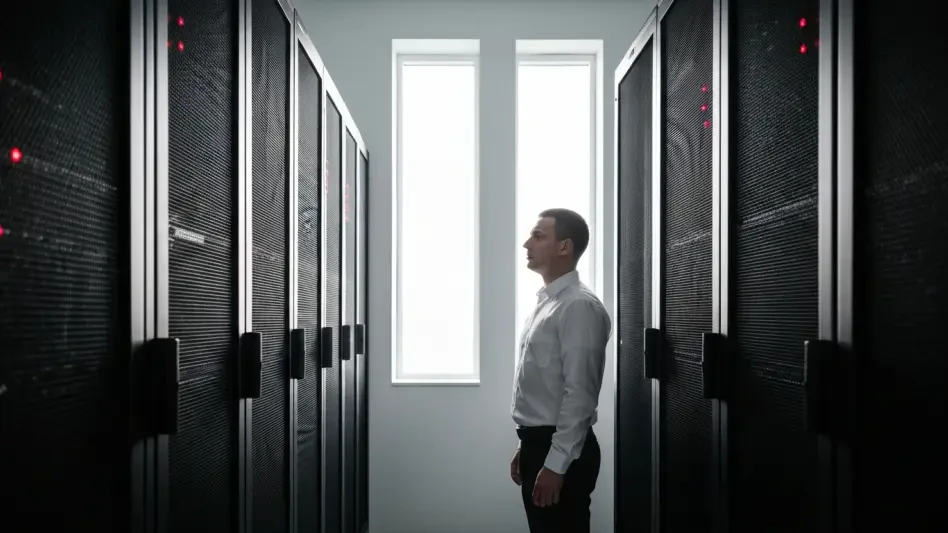In a world where critical infrastructure underpins daily life, imagine a scenario where a single deceptive phone call, crafted with chilling precision by artificial intelligence, convinces a power grid operator to override safety protocols, plunging an entire region into darkness. This is no longer science fiction but a tangible risk in operational technology (OT) markets, where social engineering attacks, amplified by AI and deepfake technologies, are emerging as strategic threats. These attacks target the human element in industries like energy, water, and manufacturing, exploiting trust to disrupt physical processes with catastrophic potential. This market analysis delves into the evolving landscape of cybersecurity risks in OT sectors, examining current trends, data-driven insights, and projections for how these threats will shape industrial security strategies. The purpose is to illuminate the growing intersection of technology and deception, providing stakeholders with a clear understanding of the challenges and opportunities in safeguarding critical systems against digital manipulation.
Unveiling Market Dynamics: The Rise of Social Engineering in OT Sectors
The OT market, encompassing systems that control physical processes in critical infrastructure, faces a seismic shift as social engineering becomes a dominant cyber threat. Unlike traditional IT breaches that often target financial data, attacks in OT environments can halt production, damage equipment, or endanger public safety, making the stakes exponentially higher. Recent industry reports indicate a sharp uptick in targeted attacks, with phishing and impersonation schemes leveraging AI to craft highly personalized deceptions. This trend is driven by the convergence of IT and OT systems, which, while enhancing operational efficiency, has expanded the attack surface for adversaries to exploit human vulnerabilities. The market’s response has been uneven, with some sectors investing heavily in cybersecurity while others lag due to budget constraints or legacy system dependencies, highlighting a critical disparity in preparedness.
A deeper look into market data reveals that sectors like energy and utilities are prime targets due to their societal impact and interconnected nature. Analysts estimate that operational downtime from a single OT breach can cost millions per day, pushing companies to prioritize security investments despite economic pressures. The integration of AI in attack methodologies, such as machine learning algorithms that analyze social media for phishing campaigns, has made these threats more scalable and harder to detect. This dynamic underscores a market in transition, where the demand for advanced defensive tools and training is surging, yet the pace of adoption struggles to match the rapid evolution of adversarial tactics. Understanding these dynamics is essential for stakeholders aiming to navigate the complex risk landscape of OT environments.
Breaking Down the Threat Vectors: AI and Deepfakes Reshaping OT Cybersecurity
AI-Driven Phishing: A Market Game-Changer
One of the most significant trends reshaping the OT cybersecurity market is the transformation of phishing through artificial intelligence. Cyber attackers now harness machine learning to create hyper-targeted emails or messages that mimic trusted contacts, exploiting publicly available data from professional networks. Industry insights suggest that these attacks have a higher success rate in OT settings, where personnel often operate under time-sensitive conditions and may overlook subtle red flags. The market for email security solutions has seen growth, but traditional filters are often outpaced by AI’s ability to adapt and scale attacks across multiple targets simultaneously, posing a persistent challenge for industrial operators.
The financial implications of these phishing campaigns are stark, with losses from compromised credentials leading to operational disruptions that ripple through supply chains. Solution providers are racing to develop behavioral analytics tools that detect anomalies in communication patterns, offering a potential countermeasure. However, the accessibility of AI tools to adversaries means that small and medium-sized enterprises in OT markets, often with limited resources, remain particularly vulnerable. This disparity drives a market need for affordable, scalable defenses tailored to the unique workflows of industrial environments, signaling an area ripe for innovation and investment.
Deepfake Deception: Redefining Trust in Industrial Operations
Beyond phishing, the OT market is grappling with the disruptive potential of deepfake technology and voice cloning, which create near-perfect impersonations of trusted individuals. These tools are increasingly used in voice phishing attacks, tricking operators into executing harmful actions under the guise of urgent requests from executives or vendors. Market analysis points to a growing incidence of such attacks, with critical sectors like manufacturing facing heightened risks due to their reliance on human decision-making in control rooms. The psychological impact of these deceptions erodes trust, a cornerstone of operational workflows, and amplifies the market’s urgency for advanced authentication solutions.
The economic cost of deepfake-driven breaches is compounded by the difficulty in detecting them, as current voice recognition systems struggle against sophisticated AI-generated audio. Emerging market trends show a pivot toward anomaly detection technologies and multi-factor authentication protocols designed for OT contexts, though adoption remains inconsistent. Larger firms with robust budgets are leading the charge, while smaller players risk being left behind, creating a fragmented market landscape. This gap presents an opportunity for solution providers to develop cost-effective tools that democratize access to cutting-edge defenses against digital impersonation.
Human Vulnerabilities: The Core Market Risk in OT Environments
At the heart of the OT cybersecurity market lies a persistent challenge: the human factor as the primary point of exploitation. Industrial personnel, often working in high-pressure settings, are conditioned to trust communications from colleagues or contractors, making them susceptible to social engineering tactics. Market studies reveal that even non-malicious errors, such as a technician inadvertently sharing access, can open doors to attackers, particularly in regions with lower digital maturity where training programs are underdeveloped. This human-centric risk drives a growing demand for tailored cyber awareness initiatives, a segment of the market poised for significant expansion.
Cultural and regional differences further complicate the market outlook, as trust-based operational models in certain areas heighten exposure to deception. Solution providers are beginning to address this with role-specific training modules and insider threat monitoring systems, though scalability remains an issue for widespread adoption. The market’s focus on human-layer security also intersects with regulatory pressures, as governments impose stricter cybersecurity mandates for critical infrastructure, pushing companies to invest in behavioral analytics. This evolving segment underscores a critical market truth: no technical defense can fully mitigate risks if the people operating the systems remain the weakest link.
Forecasting the Future: AI’s Escalating Impact on OT Threat Landscapes
Looking ahead, the OT cybersecurity market is set to face intensified challenges as AI-driven social engineering tactics become more refined and accessible. Projections suggest that within the next few years, from 2025 to 2027, hyper-personalized attacks using deepfakes and voice cloning could target high-value assets in sectors like hydroelectric power and advanced manufacturing with near-undetectable precision. Market analysts anticipate a surge in demand for AI-powered defensive tools, such as real-time threat detection and access control systems, as operators seek to counter adversaries’ technological advancements with innovations of their own. However, economic constraints in some industrial segments may slow the adoption of these solutions, creating a bifurcated market where only well-funded entities can keep pace.
Regulatory developments are expected to play a pivotal role in shaping market trends, with stricter compliance requirements for critical infrastructure likely to drive investment in security frameworks like zero trust architectures. At the same time, the scalability of generative AI tools will enable attackers to exploit smaller, less-prepared firms, potentially widening the gap between market leaders and laggards. Emerging insights indicate that resilience-focused strategies, incorporating granular network segmentation and just-in-time access, will become standard in forward-thinking OT sectors. This forecast highlights a market at a crossroads, balancing the dual forces of technological innovation and persistent vulnerabilities in an increasingly deceptive cyber environment.
Reflecting on Market Insights: Strategic Pathways Forward
Looking back on this analysis, the exploration of social engineering threats in OT markets uncovered a landscape defined by rapid technological evolution and profound risks, amplified by AI and deepfake capabilities. The examination of phishing, impersonation tactics, and human vulnerabilities revealed a market grappling with high-consequence breaches that extend beyond financial loss to societal and operational impacts. Forecasts pointed to an intensifying threat horizon, where the accessibility of advanced deception tools contrasts with uneven adoption of defensive innovations across industrial sectors.
For stakeholders, the path forward demands a strategic pivot toward human-centric and OT-specific security measures, integrating tailored training to fortify staff against manipulation. Investment in behavioral analytics and anomaly detection emerges as a priority to preemptively identify threats, while collaboration with regulators to standardize compliance offers a framework for collective resilience. Smaller enterprises, in particular, need accessible, cost-effective solutions to level the playing field against sophisticated adversaries. By embracing these actionable steps, the OT market can build a foundation to not only mitigate current risks but also adapt to the unpredictable cyber challenges that lie ahead.








